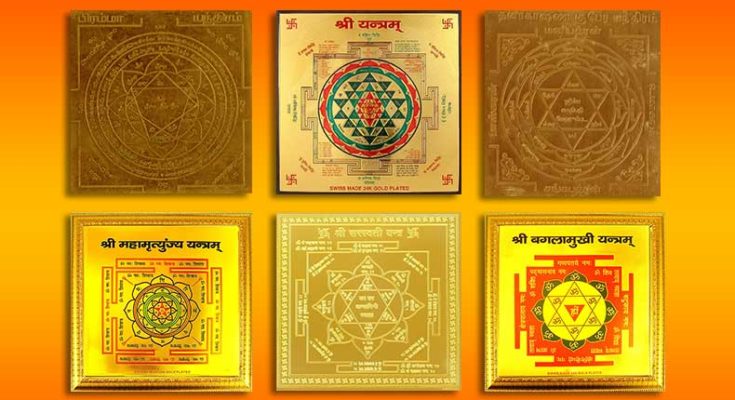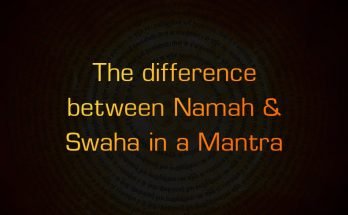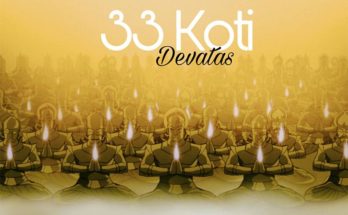The word ‘Yantra’ means an ‘instrument’ or ‘machine’ or ‘talisman’ depending upon the context. Yantra is a mystical diagram used in the Indian religions and philosophy for worship. The Yantra is the graphic, mathematics, and magic representation of the divine one.
Yantra actually implies instrument, Yantra benefits include attraction of good luck, fortune, prosperity, success, protection, and good health to the user. Likewise the images of gods in the temples, yantras are revered and worshipped as symbols of divine powers. The Devi Bhagavat(3.26.21) states – ‘Archabhave Tatha Yantram’ meaning – a yantra symbolizes a divine power. Similar meanings are indicated in ‘Naradiya Purana’, ‘Gautamiya Tantra’, ‘Yogini Tantra’, and several other Vedic scriptures.
According to Tantra, the creation of the world begins with an act of division of the opposites that are united in the deity. From their splitting arises in an explosion of energy, the multiplicity of the world. Starting from pure unity (Shiva), the world is a continuous unfolding (energized by the power of Shakti), until a state is reached when the process must reverse and involute back to the very beginning. Multiplicity must once again become unity. Yantras are symbolic representations of this process of evolution and involution.
According to Tantra, the human being is a miniature universe. All that is found in the cosmos can be found within each individual, and the same principles that apply to the universe apply in the case of the individual being. For human beings, the body is considered the most perfect and powerful of all yantras and is seen as a tool for inner awareness.
Read: Essence of the Vedas – Prof Dr Koosal Sen analyses
A yantra is thus a tool making the process of evolution conscious of the adept of Tantrism. It enables the adept to retrace his steps from the outward-directed world of multiplicity to the inward focus of unity. Yantras have been around almost as long as Hinduism itself, and have played an important role in the formation of spiritual practices. This is because practitioners embrace the concept of becoming one with the universe – the ultimate state of being, or enlightenment. Yantras, an integral part of scientific art, were found at the excavations of the Indus cities of ‘Mohenjadaro’ and ‘Harappa’, dated from 3300 BC. More recent excavations suggest that this culture developed even earlier, at roughly the same time period as ‘Sumerian’ cultures.
A yantra is just a sheet of metal unless it is properly energized. Energization of the yantra is a complex process that can’t be started on any given day. A pandit (priest) finds an auspicious ‘muhurta’ (timing) to start the ritual. The rituals are not easy and the whole process is time taking. If a yantra is not energized properly, it may not work or may not work up to its full potential. Any knowledgeable guru or pandit can do the rituals. Please note that it’s not possible even for a learned guru to energize all types of yantras.
Yes, once energized a yantra gets life but to make it work better and connect to you, you need to do mantras daily of that particular yantra. Respect the yantra, keep it in a clean place, offer flowers, ghee lamp, fruits, chant mantras and we don’t see any reason for failure. These will work 100%. More the faith – more the positivity, energy, and results. An energized yantra is like a car and your meditation is like fuel, both are required to reach the destination. It’s also recommended to get the yantras re-energized at least once a year preferably during Diwali, Holi, Navratri, or any other auspicious period.
Read: Freewill can change your destiny along with Karma correction and Vedic remedies
Yantras made on Copper, Bhojpatra, Silver, Gold, Panchdhatu, and Ashtadhatu are considered more auspicious. On Brass little less than the above-mentioned metals and on Aluminium, Steel, foils, and plastic is useless, though these are very cheap. Few Gurus make customized yantras for their disciples or followers on cloth which also works very well.
If you don’t have faith in the yantras, better don’t buy. A yantra is not a toy to enjoy or a lottery ticket to test your luck. A yantra is a tool that can work for you if you have full faith and can give proper respect to the yantras that they deserve. Also, the success of yantra depends on how to handle them. If you don’t have faith, you might not be able to give them the treatment and respect they deserve, in such cases better avoid buying a yantra.
Precautions: Never touch yantras with dirty hands. Don’t let outsiders touch your yantras. Ladies should stay away from yantras and should take them off (if worn) during those days. Avoid drinking, eating non-veg, lovemaking while wearing yantras. Yantras should be kept in the home temple or any clean place. Don’t keep yantras in the bedroom etc. Avoid carrying wearable yantras to the toilet.





